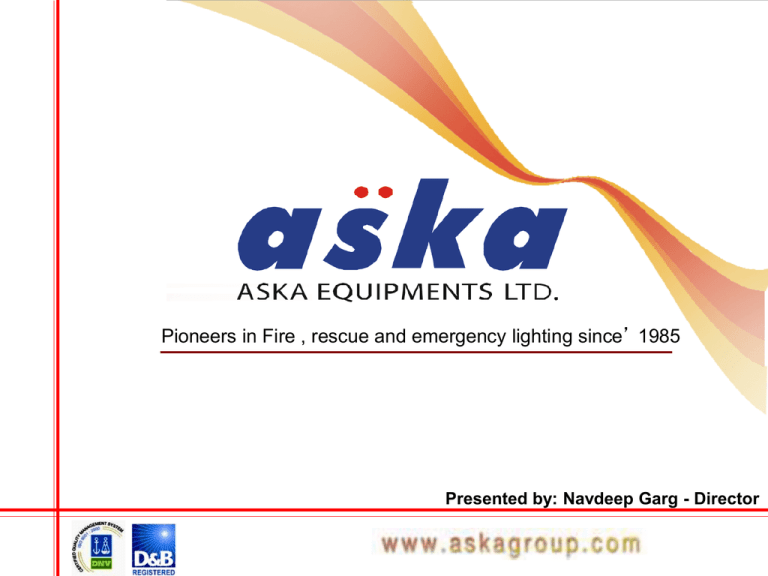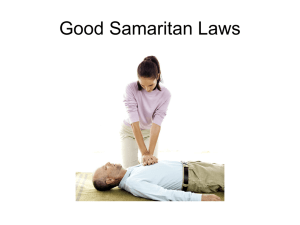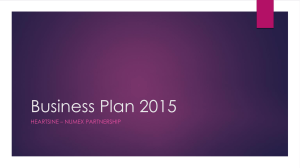AED situation (awareness, issues)
advertisement

Pioneers in Fire , rescue and emergency lighting since’ 1985 Presented by: Navdeep Garg - Director Sales team M.D- Mr. Ashok Garg Chief Marketing Officer Mr. Rajeev Raghav Gp. Capt. RajHead Business Development MIS Mr. K V Rajan ( T.N, Kerala, Karnataka, A.P, A&N, Lakshadweep) Sales Manager Bangalore Mr. Joydeep Sarkar ( East & North East ) Sales ExecutiveAssam DirectorsNavdeep, Harsh & Ashish Mr. Rajeev Bhandari ( Gujarat ) Mr. Prasad Waghmare ( Maharastra, Goa, Daman Diu) Mr. Santosh Thakur ( Rajasthan, M.P, Chattisgarh) Mr. Chary Hyderabad Mr. Vikrant Bassi and Mr. Parish ( J & K, H.P, Haryana, Uttarakhand, Punjab) Mr. Santosh Shukla (U.P and Railways) Sales ManagerAbhijit Sen Mr. Gurudeo (MES Segments) Mr. Tripuresh (SWR & MES) Employees/ Type of Expertise Aska an ISO 9001:2008 certified Company with modern/ hightech manufacturing base, established in the year 1985 and Head Quartered at New Delhi (Capital of the Country). Aska is a pioneer in the field of Specialized Fire Safety Systems and Disaster Management Products and has gained the market leadership position in last few years due to its constant endeavour to manufacture the best quality products with state of the art technology. The Fire Safety and Disaster Management Products have won accolades from various Govt. Authorities, as these product have proved instrumental in facilitating rescue works other missions, critical operations during emergencies. We have garnered appreciation for maintenance activities in various critical applications also from Defence, Railways, PSU’s etc. We have Qualified Engineers and Business Development Managers, Distributors/ Dealers capable of positioning products in the right application areas in all market segments in all 29 States & 7 Union Territories . Target markets Indian Defence Services Paramilitary Forces State Police & Fire Services State / National Disaster Management/ Flood Control Department Institutional Sales / Private Industries/ Corporates Indian Railways / Forest Department Airports / Banks Electricity Boards / Substations / Power Generations / Distributions Highway Medical Helplines Public Sector Undertakings, Mining Industries, Oil Industries Ports Postal Services Government Warehouses, Customs, Sales Tax, Income Tax, Excise offices etc. Ambulances & hospitals • • • • • • • • • • • • • Bus stations Dental clinics Marathon organizers Sports Authority of India Prominent Indian schools Banks Government offices Post offices Shipping industry Gyms & health clubs Golf course Law makers offices Ministry buildings The HeartSine Products for Indian Market Samaritan PAD 350P Samaritan PAD 360P Samaritan PAD 500P with CPR Advisor • For Western companies rushing to enter the Indian marketplace, it needs to be recognized that the country is a very different proposition -- both in terms of business practices and consumer preferences -- and must be treated accordingly. • One of the common pitfalls in addressing the Indian marketplace is simply dusting off something you might offer in your home market. Indian consumers are very different -enormously value conscious and very, very finicky. INDIAN MARKET COVERS 29 States & 7 Union Territories 1.2 Billion People AED situation (awareness, issues) Awareness: The market for defibrillators in India may be broadly segmented into external defibrillators and implantable cardiovascular defibrillators (ICDs). External defibrillators can further be segmented into monophasic, biphasic, and automated external defibrillators (AED). 1. Medical / para medical staff do have knowledge about AEDs 2. Non medical people have no knowledge of such a product Vendors and Manufacturers • The vendors of defibrillators in India include: Advanced Micronic Devices Ltd. (AMDL), BPL Healthcare, Criticare Sys-tems (since acquired by Opto Circuits etc. and now a part of AMDL), GE Healthcare, India Medtronic, Instromedix India (Medtronic Physio Control), Life Support Systems, Meditech Electronics, Metrax GmbH, Nasan Medical, Philips Healthcare, Schiller, Trivitron, Universal Medical, and Zoll Medical (represented by L&T Medical), • Presence of Few Korean and Chinese companies which have CE approval • Defibrillators are now used widely in public places such as airports, police cars, railway stations, shopping malls, tourist places, and the like, for providing immediate defibrillation to patients of sudden cardiac arrest. Public awareness of the need for early defibrillation has continued increasing. Despite being relatively new, as installation of AEDs in public places has been made mandatory in several countries abroad this public access defibrillators (PAD) market holds enormous revenue potential for defibrillators and is likely to be the largest market segment in near future. However, the concept of installing AEDs in public places is yet to be adopted in India; hence, efforts must be made to enhance the usage of AEDs in India AED situation (awareness, issues) No Samaritan Law in India & hence people are not willing to take the risk The market is faced with challenges such as stringent laws that restrict the use of defibrillation, resulting in fierce competition. Despite the strong dominance of a few players, there is still a significant level of competition among the smaller participants. High import custom duty- 12% plus handling and freight 8% AED situation (awareness, issues) The Difficulty Of Being Good It is time India had a Good Samaritan law AED situation (awareness, issues) Status of Samaritan Law in India Why do people hesitate to come forward and lend a hand? A 2013 survey conducted by SaveLIFE Foundation, an NGO focused on improving road safety and emergency care in India, shows that 74% bystanders are unlikely to assist a seriously injured person on the road, irrespective of whether they are alone at the spot or in the presence of others. The study, conducted across seven cities, Delhi, Hyderabad, Kanpur, Mumbai, Indore, Ludhiana and Kolkata, also offers some insight into why bystanders fail to come forward to assist. *88% of bystanders who were unlikely to assist cited legal hassles like police questioning and court appearances as a deterring factor. *74% said they would be more inclined to step forward and help if the accident occurred in a familiar environment as they were more confident of receiving help and support. *77% of those unlikely to assist said lack of cooperation from hospitals is also a reason. AED situation (awareness, issues) *88% expressed the need for a Good Samaritan Law that will create a supportive environment for bystanders to assist road accident victims. However, currently in India there is no such law that offers protection to those who come forward to help accident victims. Research by SaveLIFE Foundation highlights initiatives taken worldwide in this regard. For instance, in the state of Vermont in U.S.A., and in countries like France, there is an obligation on a person to provide assistance to an injured party, if such person can do so without danger or peril to any other person. Countries which do not impose such an obligation, like England, Wales and China, provide civil and/or criminal liability protection for any person that provides assistance to an injured party, provided certain statutory requirements are met. AED situation (awareness, issues) In India too, interestingly, the demand for this legislation was voiced most strongly by people in the lower socio-economic strata, with 95% demanding protection from arbitrary police harassment. India has the largest number of road-related deaths in the world. The Good Samaritan Law can go a long way to address this crisis and help ensure that hundreds of lives are not lost for reasons that are completely preventable. Sign NGO SaveLIFE Foundation's petition to the Health Minister to introduce a Good Samaritan Law AED situation (awareness, issues) NO SAMARITAN LAW IN INDIA This Law will protect and encourage Good Samaritans to help injured person on the road and will include: Protection from legal hassles for Good Samaritans who help injured victims Protection from legal hassles for Medical Professionals who immediately attend to the victim. Hassle-free procedures for investigation and evidence in police and Court Strict disciplinary and departmental action against public officials who coerce or intimidate a Good Samaritan Guidelines to all hospitals to treat trauma victims and not to detain those who bring the victims AED situation (awareness, issues) A system for recognizing and celebrating those who save lives Several countries around the world have laws to protect and reward Good Samaritans. India needs one urgently. SaveLIFE Foundation India (NGO) signs this petition in asking the Health Minister, to ensure protection of Good Samaritans by introducing this law in the Parliament. AED situation (awareness, issues) News; Oct 29, 2013, 12.00AM IST Support is growing for a Good Samaritan law to help road accident victims TIMES VIEW Encourage helpful bystanders Championed by the Supreme Court of India, a legal framework to encourage bystanders to help road accident victims is gaining momentum. Given that road accident fatalities in our country are the highest in the world, and most of these can be averted if victims receive emergency care within the 'golden hour' after an accident, enacting a Good Samaritan law makes excellent sense. AED situation (awareness, issues) Article 223(6) of the French Criminal Code states: “Whoever voluntarily fails to provide to a person in danger the assistance that, without risk for himself or a third party, he could provide, either by his own actions, or by initiating a rescue, may be punished by up to five years of imprisonment and a fine up to €75,000.” The same spirit of ‘Duty to Rescue’ also is reflected in Article 323(c) of the German Criminal Code as also the Italian, Canadian, Australian, Argentinian and in some US states. Immunity from prosecution is also provided by the law to the first responder who rescues the accident victim in Australia, Canada and some states in the US . This form of law is commonly referred to as the Good Samaritan Law. In India the genesis of the Good Samaritan Law could be traced to a 1989 Supreme Court judgement. The Supreme Court in Parmand Katra vs Union of India stated: “The effort to save the person should be the top priority not only of the medical professional but even of the police or any other citizen who happens to be connected with the matter or who happens to notice such an incident or a situation.” But the reality oustide the courtroom remains grim. How you reach target markets • • • • • • DGS&D A CENTRAL PURCHASE & QUALITY ASSURANCE ORGANISATION of Govt. of India, Department of Supply, Ministry of Commerce. In the year 1860, the British Govt. evolved a concept of CENTRAL BUYING & set up INDIA STORES DEPARTMENT in LONDON for meeting procurement needs of Govt. of India. Established in 1951 in its present form for rendering procurement services to Central & State Govt. by placing Rate Contracts for common user items & contracts against their ad-hoc demands. Adhoc procurement decentralized in December, 1991. Main function now is to conclude RATE CONTRACTS. Quality assurance functions continue to remain centralized as before. Continues to be the NODAL Agency of Govt. of India for purchase policy & procedure. Govt. Departments/Organisations, who have not built-up their own infrastructure for purchase, can raise their demands on DGS&D for adhoc procurement. How you reach target markets Advantages in Associating with DGS&D To Suppliers Its REGISTRATION is held in high esteem by all Govt. Department/Agencies Award of rate contract lends respectability & image enhancement. Marketing effort required is nominal. Consistent & uniform purchase policies & procedures. Availability of technical guidance for upgrading manufacturing processes & for building product quality. Uniform Quality Assurance techniques lead to standardization. Registered suppliers are given prior intimation about tenders. To Buyers Facility of bulk purchase of lowest competitive price. Enables buying as & when required. Saves effort involved in tedious & frequent tendering. Just in Time availability of supplies for inventory management. Availability of quality goods with full quality assurance back-up. How you reach target markets Indian market is very different: All Non Indian Companies think they have a huge market out there and it’s a piece of cake to sell to them. The above is correct only if we do the business in India by adopting the Indian way- McDonald's food chain Once the Target market is identified, we write to them or meet them and request for a presentation & demontration and ensure that the decision makers attend the presentation Provide them relevant customer testimonials Tailor our marketing techniques as per the market Advertisement in Medical Equipment Magazine, retired heads of departments and companies are engaged , doctors Exhibitions , conferences & seminars Gillette • Traditionally, Gillette relied on extensive research and development to create a single product for global distribution. The product was supported by a marketing premise that it would be equally valuable to customers globally. But Gillette set aside its global strategy in India and grew its market share dramatically. • Although Gillette entered the Indian market in 1984 and launched its newest triple-blade system, Mach3 in 2004, sales were flat for a long time. The product did not go through any changes and kept its key features - such as long lasting diamond-like coating blades, 'PowerGlide' smoothness, ergonomic handles, pivoting precision heads - and premium price, which was 10 times more than its two-blade competitors. • Once Gillette understood this consumer segment, the company created a new customised product. Gillette Guard, the first product created just for the Indian market, was introduced in October 2010. It was priced at just Rs15 per razor - less than 35 cents and three per cent of the top-ofthe-range Fusion ProGlide price. At Rs5 for a refill cartridge, Gillette Guard met customer expectations on safety and ease of use. Sales Techniques or Promotions that worked Improvisation and adaptability. Improvisation and adaptability are also at the heart of the India way. In a complex, often volatile environment with few resources and maddening red tape, we have learnt to rely on our wits to circumvent the innumerable hurdles we recurrently confront. Getting DGS&D rate contract is the key to sell large quantities and competitors will not be considered once we get that approval. We are sure we can few thousand units every year once we get the above Indian approval. Support from Heartsine 1. Remaining models needs to be USFDA approved . Specifically the Hindi version of both the models. 2. Models in other regional languages after few years 3. The current cost has to go down by 10 to 15 % as other reputed players are selling at that cost. This can be done later once we get the approval. Not comparing it with Korean and Chinese products as they are much cheaper 4. Need soft copies of leaflets, presentations, banners, posters which are customized according to market segments / verticals 5. Training on how to use the product in detail 6. More information about how the 10 year warranty is valid and how they will provide post sales services Aska Equipments Ltd. R-482, New Rajendra Nagar, Sir Ganga Ram Hospital Square, Shankar Road, New Delhi – 110 060 Ph : 011 49458800 Fax 011-49458844 Email: info@askagroup.com







